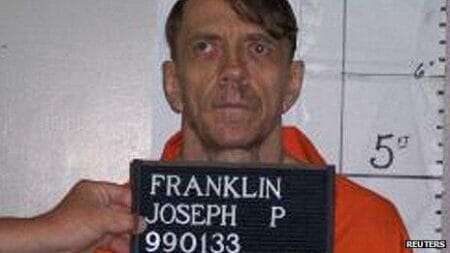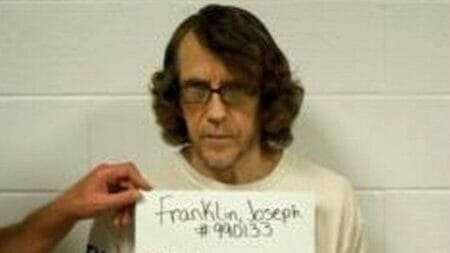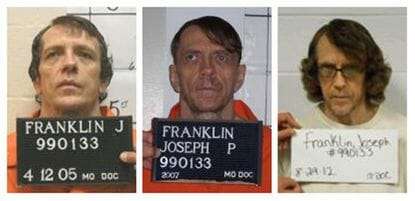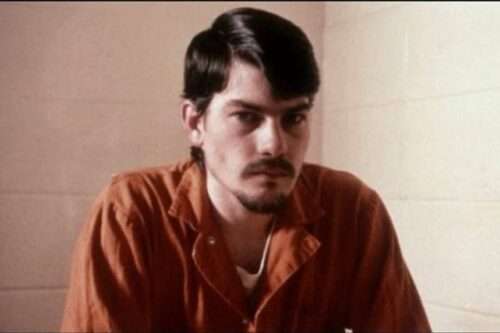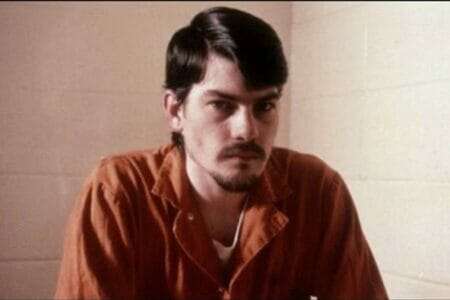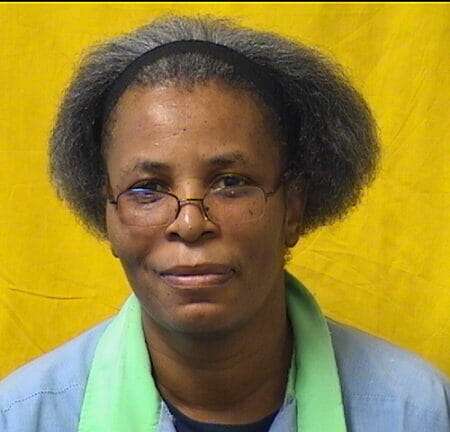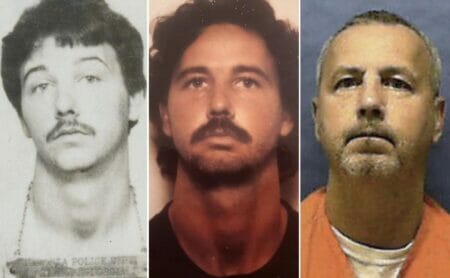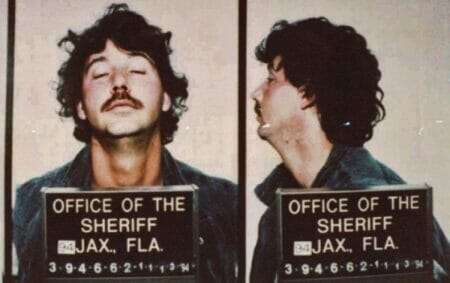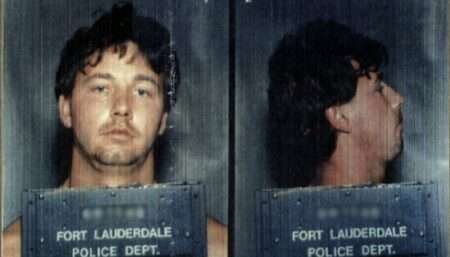
Donald Pee Wee Gaskins was a serial killer from South Carolina who was executed for a series of murders. Donald Pee Wee Gaskins was a bad man whose drive to kill was among the greatest that I have come across, piss off pee wee and chances are he would kill you. In this article on My Crime Library we will take a closer look at Donald Pee Wee Gaskins
Donald Pee Wee Gaskins Early Life
Donald Gaskins was born in Florence County South Carolina on March 13, 1933. According to Gaskins he was called Pee Wee from a very early age and did not know his first name was Donald until his first court appearance. There was a lot of neglect in the Gaskins household and Donald would drink a bottle of kerosene when he was one years old that would make him suffer convulsions for the next two years.
Donald Pee Wee Gaskins Early Crimes
Donald Pee Wee Gaskins first major brush with the law happened in his teens when he along with a number of other youth would commit a series of robberies, assaults and a gang rape. Gaskins would be sent to reform school where he was repeatedly raped by other inmates. Donald would escape from the reform school and would get married. He would later return voluntarily to complete his sentence and be released at eighteen years old
After being arrested for attacking a girl with a hammer Donald Gaskins would be sentenced to six years in prison. While in prison Pee Wee would murder another inmate and received three more years in prison. This murder would change Gaskins from the prey to the shark. Gaskins would escape prison in 1955 and would be arrested in Florida where he was returned to finish his prison sentence in 1961
Donald Pee Wee Gaskins Murders
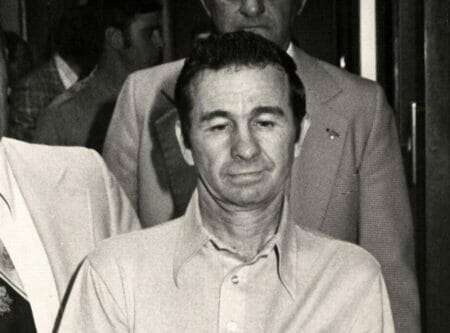
Very shortly after being released from prison Donald Pee Wee Gaskins would be back to his own ways committing robberies and selling stolen property.
Gaskins would be arrested for the rape of a twelve year old but he would flee before he could be sentenced. The State of Georgia would ultimately sentence him to eight years in prison. Donald would be paroled in 1968.
Donald Pee Wee Gaskins would pick up a hitchhiker in 1969 who he would sexually assault, torture and murder. According to Gaskins he referred to this type of murder as a “Coastal Kill” and he committed one every six weeks. Donald Gaskins has said that he committed eighty or ninety “Coastal Kills” however that number changed throughout the years.
In November 1970 Donald Pee Wee Gaskins would commit what he referred to as a “Serious” murder as the victim was someone that he knew. The first two “Serious” murders was his own niece and one of her friends , Janice Kirby, and Patricia Ann Alsbrook, who Pee Wee sexually assaulted and murdered. According to Gaskins there was a number of “Serious” murders done for a variety of reasons: the person looked at him the wrong way, had stolen from him and tried to blackmail him.
When it came to the “Serious” murders Donald Pee Wee Gaskins would execute the person with a gun and then bury their bodies around South Carolina. In 1973 Donald Gaskins would kidnap his neighbor and her two year old daughter who he then sexually assaulted and murdered.
In 1975 Donald Pee Wee Gaskins would be hired by a woman to kill her boyfriend Silas Barnwell Yates. Gaskins would end up killing four more people to cover up the murder.
Donald Pee Wee Gaskins Arrest
Donald Pee Wee Gaskins was finally arrested in November 1975. An associate of Gaskins told police that he watched Pee Wee murder twenty eight year old Dennis Bellamy and fifteen year old Johnny Knight. The associate also told police that Gaskins had admitted to him many more murders.
Ultimately Donald Pee Wee Gaskins would led police to an area where he had buried several bodies. When police dug up the area they found the bodies of eight people.
Donald Gaskins would be convicted of the eight murders and sentenced to death however the South Carolina Supreme Court would rule that capital punishment was unconstitutional and Pee Wee death sentences were commuted to life in prison.
Donald Pee Wee Gaskins Final Murder
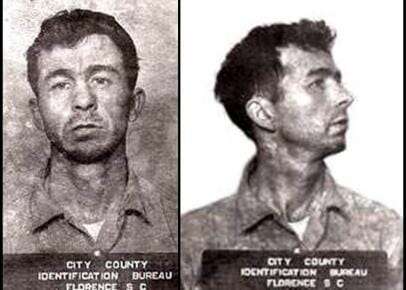
In 1982 Donald Pee Wee Gaskins would murder a fellow inmate. According to court documents Gaskins was hired by the son of a couple who the fellow inmate had killed. Donald would attempt to poison the man, Rudolph Tyner, by poisoning him however when that failed to work Pee Wee would rig up an explosion that was implanted in a speaker. Rudolph Tyner would hold the speaker up to his ear and Gaskins would trigger the explosion killing Tyner.
Donald Pee Wee Gaskins would be convicted of the murder and sentenced to death, again. This was the first murder in South Carolina history where a white man was sentenced to death for killing a black man.
Donald Pee Wee Gaskins Execution
Hours before he was scheduled to be executed Donald Pee Wee Gaskins attempted to kill himself by cutting his wrists. Donald Gaskins would be executed by way of the electric chair on September 6, 1991
Donald Pee Wee Gaskins Videos
Donald Pee Wee Gaskins More News
He was a little man with a squeaky voice, dead eyes and a black heart.
Infamous killer “Pee Wee” Gaskins was the definition of a human paradox. At first glance, Donald Henry Gaskins was less than menacing.
But his barely 5-foot-5, 130-pound frame packed a lot of meanness. He confessed in 1978 to murdering 15 people and burying their corpses in three Pee Dee counties. At least four of his victims were 15 or younger. Gaskins admitted waiting for hours beside a dirt road until accomplices lured a 13-year-old girl close enough to apprehend her.
He once told a judge, “There’s quite a few bodies that’s never been mentioned … but you’ve got enough for now.”
Gaskins jumped in 1964 from a second-floor window at the Florence County Courthouse when on trial for carnal knowledge of a 13-year-old girl. He scampered to nearby swamps, where he eluded police for weeks. Authorities thought he was cornered when they heard bloodhounds baying, but Gaskins had tied them to a tree.
He drove a hearse around his native Prospect, a community in Florence County.
Gaskins was serving 10 life sentences at notorious Central Correctional Institution in Columbia when, in 1982, he carried out a contract, revenge killing of Death Row inmate Rudolph Tyner. Gaskins blew up Tyner by giving him a plastic cup he had told Tyner was an intercom. It exploded when Tyner put it to his ear.
That murder landed Gaskins on Death Row. But prison walls never stopped his scheming.
Two weeks before he became the 245th South Carolina prisoner to die in the electric chair, Gaskins plotted with his son to kidnap the 3-year-old daughter of then-Columbia-area solicitor Dick Harpootlian, whose prosecution moved Gaskins from a life sentence to his own date with death.
In his last night, Gaskins slashed his wrists and the crooks of his arms with a razor blade he had lodged in his throat and regurgitated. It took 20 stitches to save him for the electric chair at 1:10 a.m. Sept. 6, 1991.
https://www.thestate.com/news/special-reports/state-125/article44056854.html


